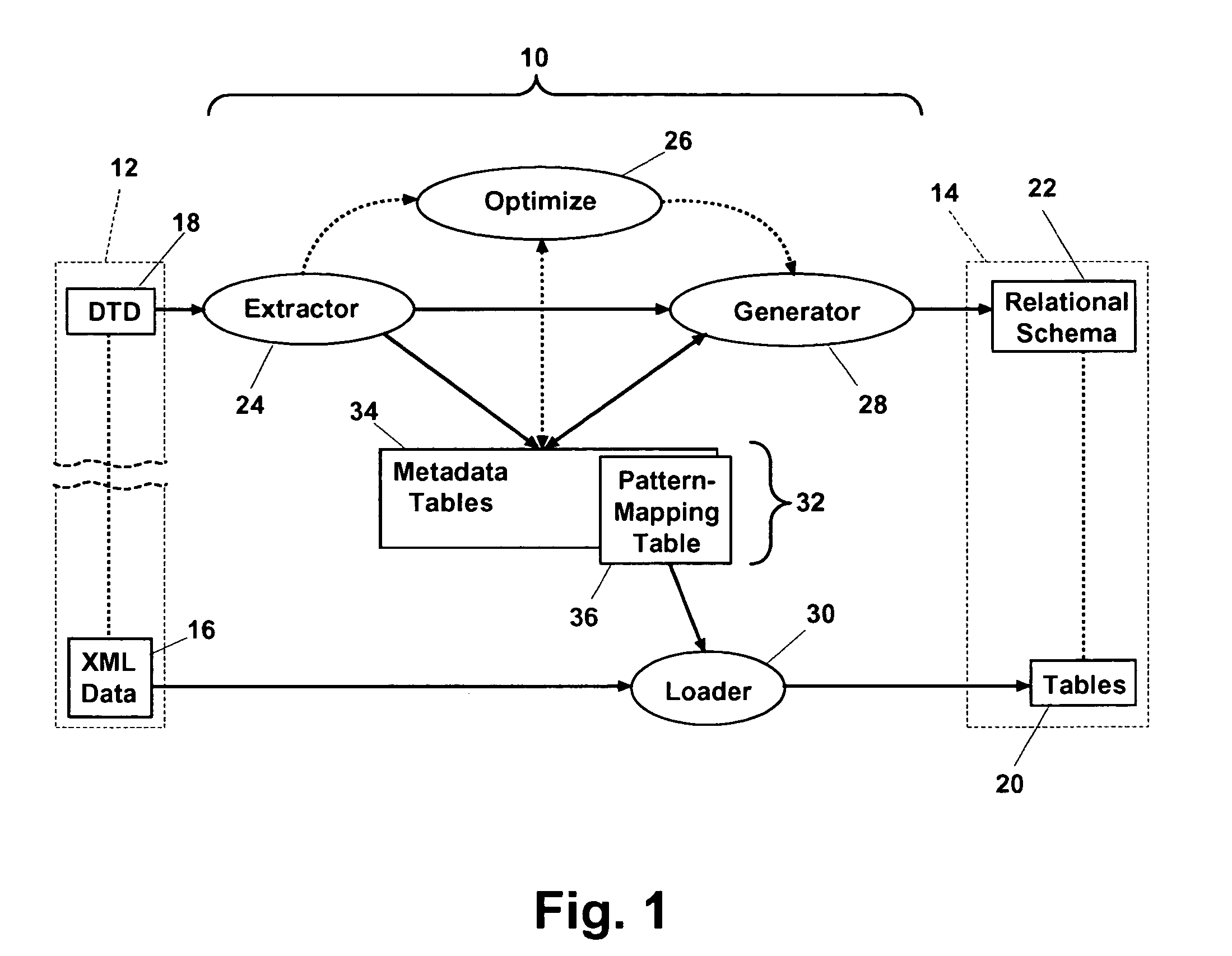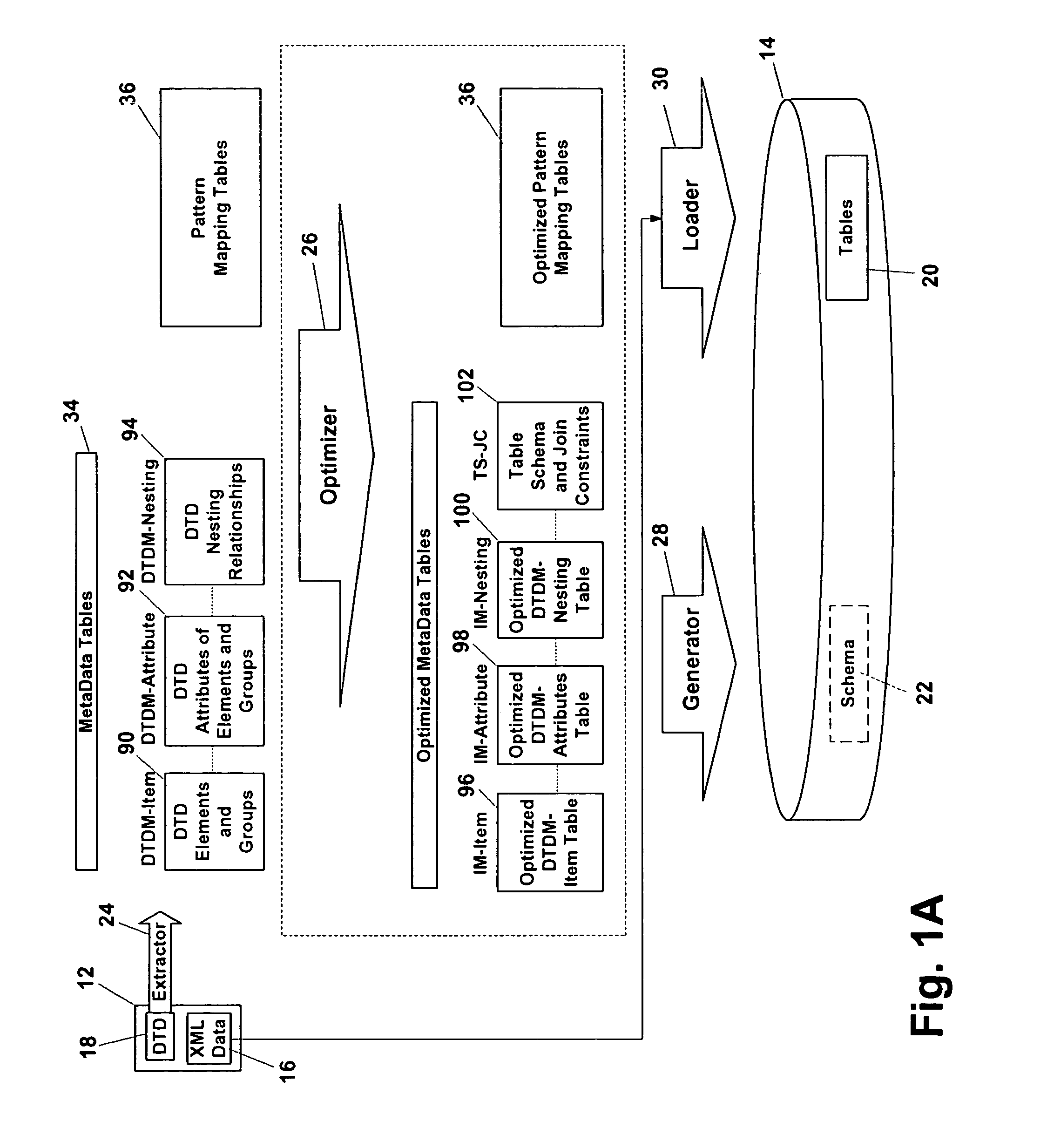System and method for automatic loading of an XML document defined by a document-type definition into a relational database including the generation of a relational schema therefor
- Summary
- Abstract
- Description
- Claims
- Application Information
AI Technical Summary
Benefits of technology
Problems solved by technology
Method used
Image
Examples
example 2
A Valid XML Document Complying With the DTD of Example 1
[0221]
XML Relation MappingXinZhang Department of Computer Science Worcester Polytechnic Institute Worchester, MA 01609-2280GailMitchell Verizon Laboratories Incorporated 40 Sylvan Rd. Waltham, MA 02451Wang-chienLee Verizon Laboratories Incorporated 40 Sylvan Rd. Waltham, MA 02451
FIGS. 12–14
[0222]With reference to the drawings and, specifically, to FIGS. 12–14, an XML tree model 300 is proposed herein, followed by the introduction of the concept of patterns detected during the importation of the data, the definition of the loading actions, the description of the generation of a pattern-mapping table, the provision of details of the loading algorithm, and finally by a loading example.
[0223]By way of explanation, it is known to parse XML documents into a document object model (DOM)-complaint XML tree structure. Here, a simplified DOM model is proposed for illustration purposes. This model (of the type shown in FIG. 14) is composed...
PUM
 Login to View More
Login to View More Abstract
Description
Claims
Application Information
 Login to View More
Login to View More - R&D
- Intellectual Property
- Life Sciences
- Materials
- Tech Scout
- Unparalleled Data Quality
- Higher Quality Content
- 60% Fewer Hallucinations
Browse by: Latest US Patents, China's latest patents, Technical Efficacy Thesaurus, Application Domain, Technology Topic, Popular Technical Reports.
© 2025 PatSnap. All rights reserved.Legal|Privacy policy|Modern Slavery Act Transparency Statement|Sitemap|About US| Contact US: help@patsnap.com



